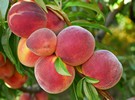A new FDA report details how airborne contamination can spread pathogens from farms and animal operations to fruit orchards. In the summer of 2020, over 100 people got sick in a major Salmonella Enteritidis outbreak that food safety experts linked to peaches. However, according to national foodborn e illness records dating back 50 years, there had only ever been three other peach-associated outbreaks in the United States, and none of them involved salmonella.
e illness records dating back 50 years, there had only ever been three other peach-associated outbreaks in the United States, and none of them involved salmonella.
It’s not just the fruit that was atypical; the method of contamination also appears unexpected. Commonly, foodborne illness outbreaks are attributed to contaminated water. In this instance, the Food and Drug Administration (FDA) suspects that the salmonella was actually spread through the air.
According to a new report published last Friday, the agency is advancing the possibility that pathogen-carrying dust blown in from nearby animal operations may have played a role in contaminating peach orchards last summer. FDA referred to these aerial particles as “fugitive dust” and hypothesized that microscopic salmonella bacteria may have hitched a ride on them, propelled by wind, from neighboring cattle and poultry operations.
Source: thecounter.org
Photo source: Dreamstime.com


